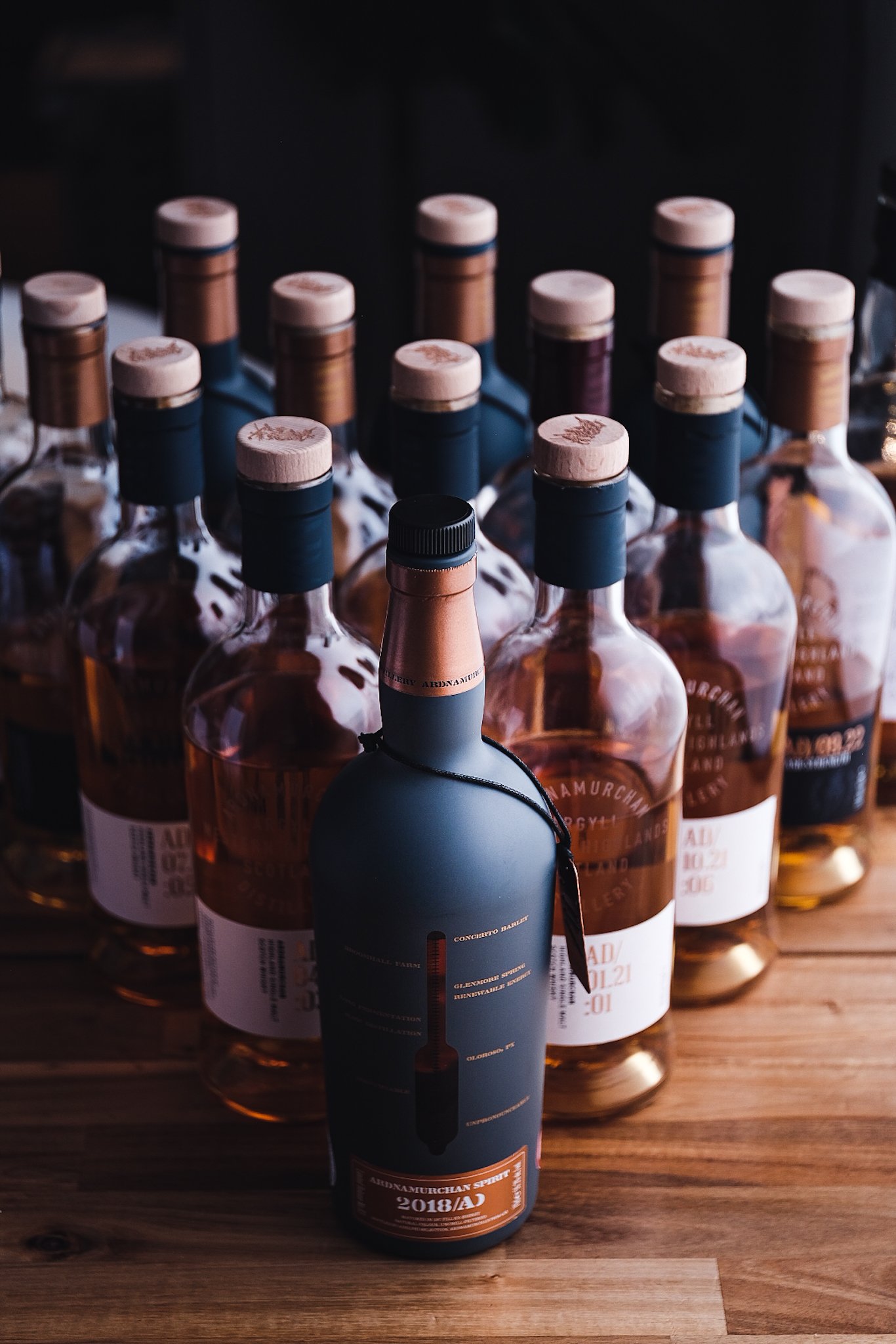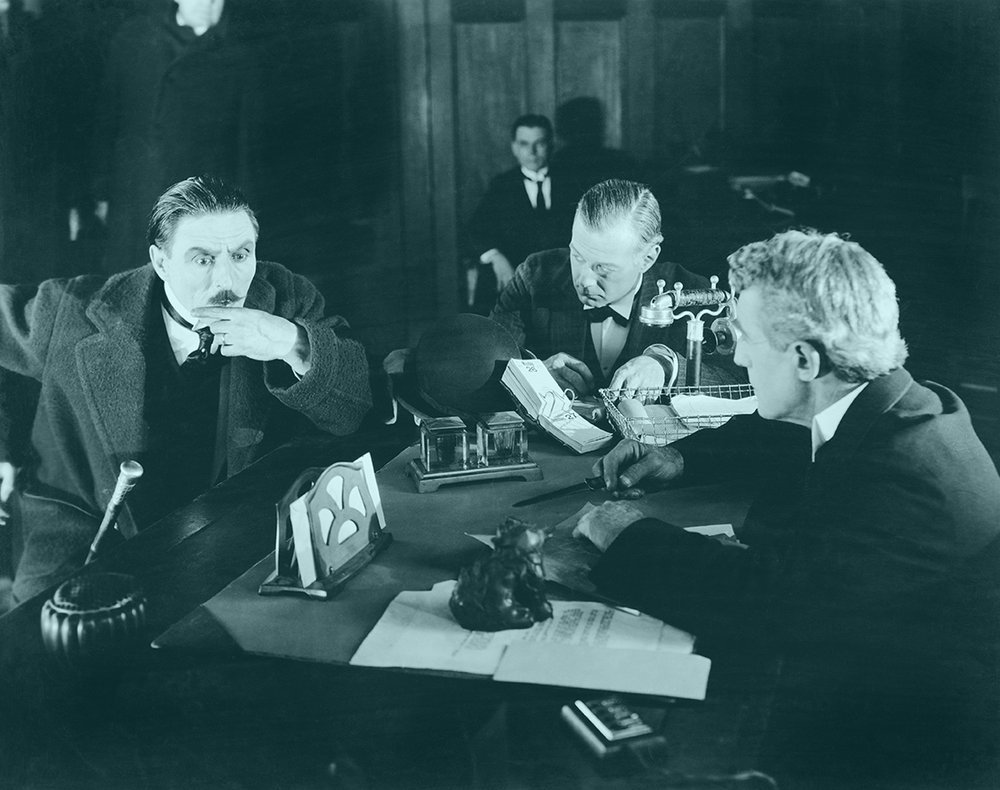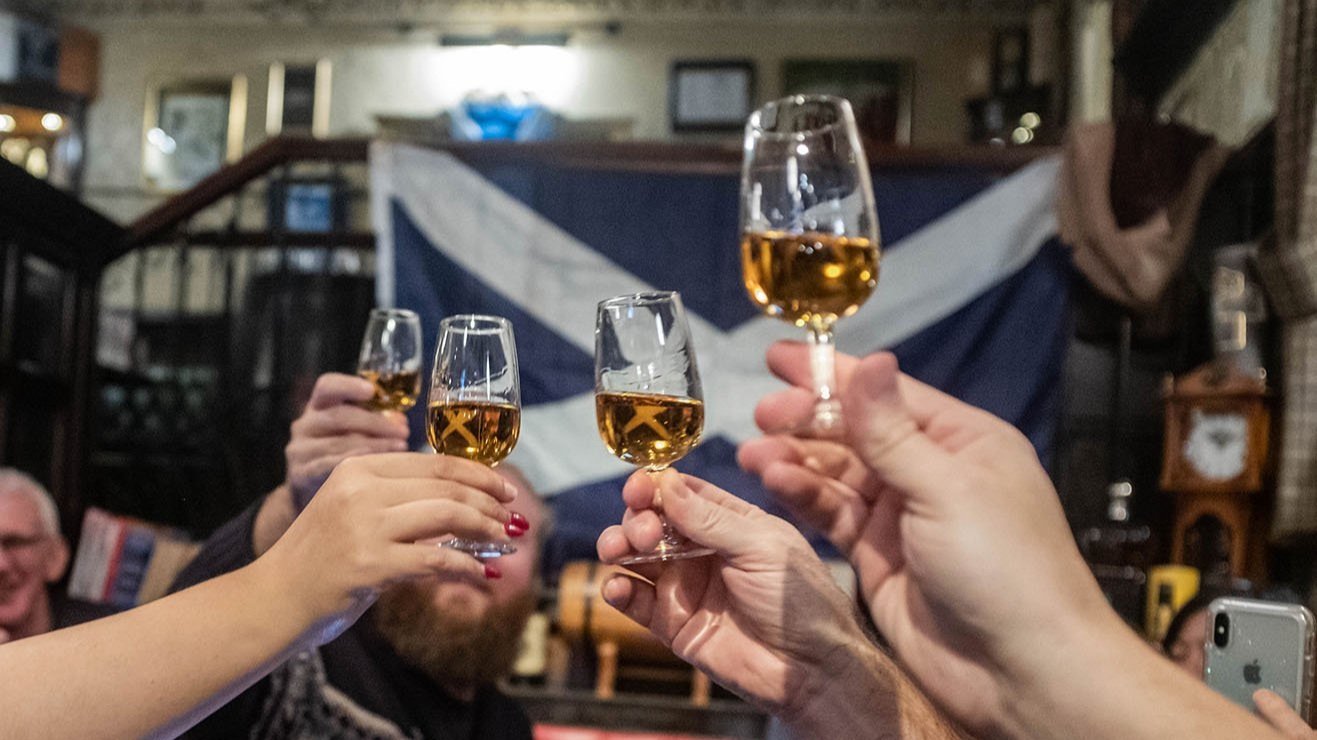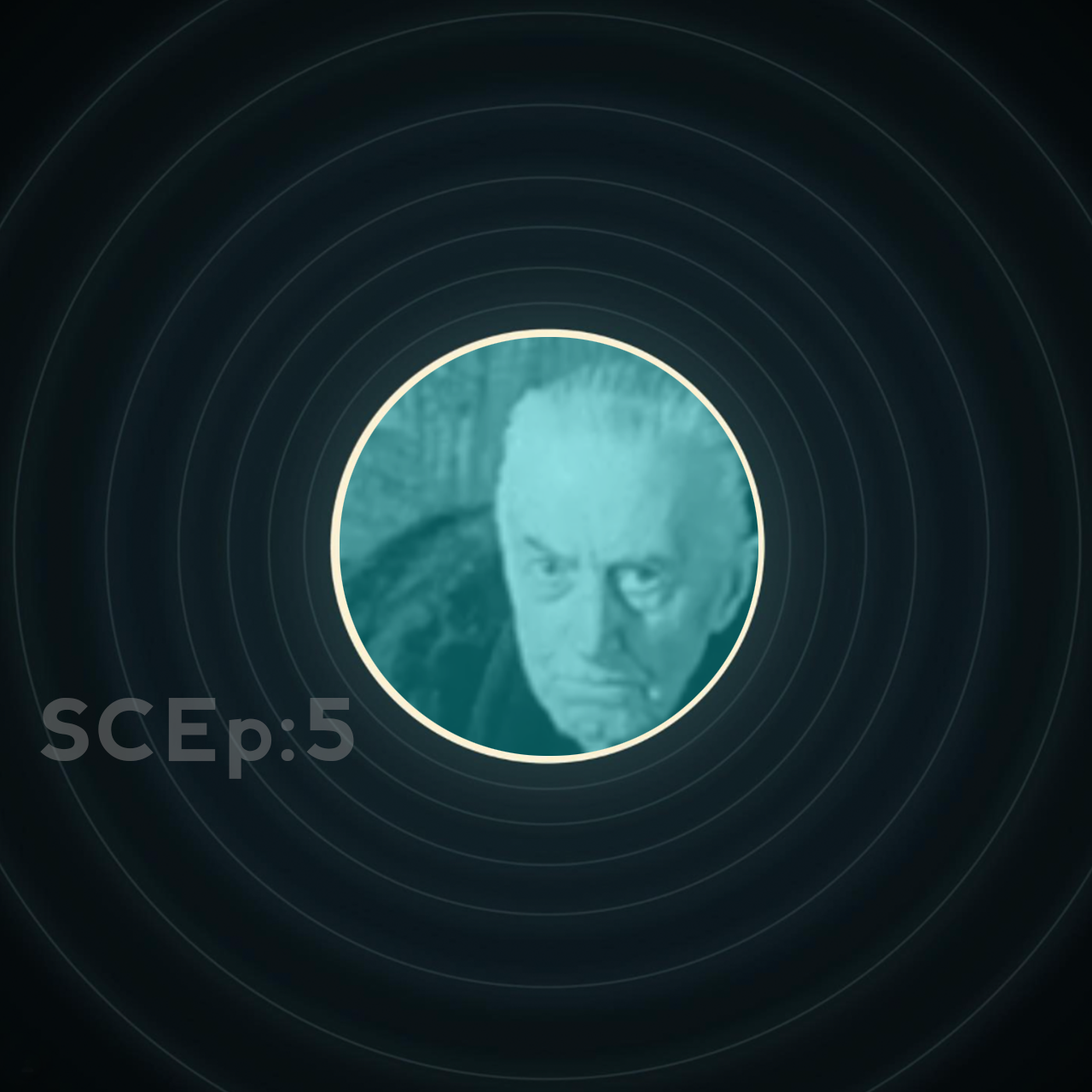Ardmore Indy Duo
Firkin & James Eadie side-by-side | 48.9% & 60.4% ABV
Insiders turned Indies
Like many others, my journey through the wonderful world of single malt scotch has come to include dutiful and diligent exploration of those distilleries that are largely or completely unknown for their own official bottlings of single malt.
These are the unsung – and largely overlooked – stalwart distilleries that produce the bulk of all scotch produced in any given year. The stuff that ends up in the blends that are the face of scotch for so many people around the world.
With blended whisky being roughly 90% of all scotch sold, it makes sense that there are going to be some distilleries that focus entirely on that. Yet many of them produce seriously good single malt – if you can find it.
Which, if you can, is almost always going to be bottled by one of the many independent bottlers that are our salvation when it comes to enjoying fine expressions of whisky we’d otherwise never get to savour in its finest form. At this point we have to acknowledge the Flora and Fauna series of bottlings – as it’s become unofficially known – which is Diageo’s swing at letting us see what kind of quality is going into their blends. It’s often the only way you’ll get to taste an official distillery bottling of many of these blend-focused operations.
One such distillery – of which I’m particularly fond – is Beam Suntory’s Ardmore. Its distinctively peaty spirit resonates with me, although I’ve yet to have the unpeated Ardlair that comes from the same source as it’s impossible to find in the USA.
I’ve enjoyed many a dram from a plethora of independent bottled offerings over the years. Where would we be without the IBs? Coincidentally, it turns out that my predilection for the whisky of the Ardmore distillery goes back further than I realised. It does, in fact, play a central role in my very first experiences of scotch.
Unbeknown to my clueless 13-year old self, the first whisky I tasted was – for the most part – an Ardmore. It came in the form of Teachers Highland Cream in the mid-1970s, a principal component of which is Ardmore. In fact, despite digging, it’s hard to find out what other distilleries contribute to Teachers as only Ardmore seems to get a name check in the write-ups. My Dad first gave me a sip and, although I’m quite sure I didn’t actually like it at the time, it became the booze I’d furtively sneak a nip of when the family was ensconced in the living room watching Morecambe and Wise or Z Cars.
Fortunately for me, my Dad wasn’t particularly attentive of what little booze he kept in the house. He really wasn’t a drinker. A bottle of Teachers was something that appeared every year at Christmas in the same way the Cherry Brandy appeared for my Mum. And so, the occasional slurp that I’d take from the bottle went unnoticed throughout my teen years – and ever after for that matter. In truth I never took more than the smallest sip humanly possible. This was partly due to my entirely rational desire to avoid getting caught. But, in truth, it was also because I really didn’t like it that much. I was 13 for God’s sake.
I drank it because it was my Dad’s drink and therefore a grown-up thing. And like every 13-year old, being grown up is what it was all about. And by nicking my Dad’s whisky, I was obviously that bit more grown up than I would otherwise be, That’s how it works, right?
The other reason I drank it was of course, because I wasn’t allowed to. And thus, I lived the cliché of so many teens, and broke the rules because that made me feel like I had a measure of control and independence in my life. Which of course I didn’t. Fortunately, this nascent life of familial crime didn’t develop into an unhealthy attachment to booze, nor a compulsion to steal other people’s drinks.
But there is the very faintest chance that perhaps it did lead to my interest in scotch years later and maybe even to my enjoyment of Ardmore. Just maybe there’s some kind of sense-memory that recognizes a distant echo of Teachers Highland Cream in some facet of the Ardmore I drink today.
Unlikely I agree, but as a hopeless romantic, those kinds of connections are what I intuitively lean toward, even if I don’t really buy it.
Now at this point, you would be forgiven for assuming that I’m about to unleash a review of Teachers Highland Cream on you. But in that, dear Dramfacer, I have failed you. It would need to be from the 1970s to really hit the mark and I don’t have one on hand. They appear at auction fairly frequently so maybe I’ll pick one up the next time I see it.
In the meantime my offering is two independently bottled Ardmores – one a straightforward bourbon cask matured whisky, and the other a Marsala cask finish. The two differ wildly in terms of ABV (one weighs in at 48.9%, the other at 60.4%) so I don’t suggest they should be compared. Maybe contrasted as examples of how the Ardmore distillate can behave when presented so differently.
Interestingly, they are both from companies founded by once upon a time whisky industry insiders.
Review 1/2
Ardmore 8yo, Firkin Rare, Marsala Cask Finish, 48.9% ABV
USD$79 paid locally (£65)
The Firkin Whisky Company is an Australian based independent bottler headed up by ex-Diageo Mike Collings, who most likely had a hand in those Flora & Fauna releases I mentioned earlier. You can discover a lot more about Mike and his tales over at his blog.
Score: 5/10
Average. In a good way.
TL;DR
A bit of a wallflower. Until the end
Nose
Oatmeal and flapjacks. Lemon sherbet and lime. There’s a nuttiness that’s hard to place. Maybe Brazil nuts.
After a while I’m picking up a little ripe plum and maybe some pear. Overall the nose is very light. Shy, or reticent even. It’s what I’d describe as “pleasant”. Certainly nothing to object to, but nothing to get excited about either. Nothing is jumping out to demand you’re attention.
The label defines the character as “Sumptuous Peat”. Based on the nose, you wouldn’t know it. It’s perfectly agreeable, but not exactly distinctive or suggestive of anything peaty. Not what you typically expect from an Ardmore.
Palate
Oak and tannins meet up with citrus, white pepper, baked apples, cinnamon, brown sugar and cereal. It’s dry in the mouth and has none of the fulsome viscosity one might expect from something that dallied with a fortified wine cask.
That said, a lot of Marsala is at the dry end of the spectrum and a lot of it gets used in cooking to bring nuttiness and body. So maybe the dryness in the mouth is to be expected. It’s definitely not projecting a lot of sweetness. And that’s fine.
I’m tempted to say I’m picking up hints of tobacco in this, but that may be the tannins from the wood. And it’s the wood that is dominating this for me.
The fruit is actually quite muted. It’s there, but it’s almost as if it’s been cooked down and stirred in with everything else to diminish it.
The peat is also rather subtle – until the finish, when it finally asserts itself. Once you let the whisky go down, you're hit with a warming, peppery and nutty note that’s wrapped in a gentle peak smoke that lingers.
The Dregs
This is not a whisky that gives a great deal at first blush. It’s one that demands a bit of thought. One of those whiskies that you have to decode as you work your way through it.
In a way I think the challenge with this whisky comes from what we might expect from fortified wine casks. Maybe we start to expect the rather succulent viscosity and rich sweetness that tends to come from a lot of whiskies finished in that way. Think port, madeira and of course many of the sherry-finished drams we enjoy (but not all).
And of course, when the label actually declares the spirit to be all about “sumptuous peat” you do kind of expect it to be well…. sumptuous and peaty. But it's neither as far as this reviewer's palate is concerned.
I do think it’s a good whisky, and I like the fact I have to think about it to work out what’s going on in my mouth. But it’s not what I was expecting in pretty much any dimension. Which probably means I had the wrong expectations of the Marsala influence. But I definitely expected more peat.
To my mind, it’s more interesting than many of the core releases that are put out by some of the larger distilleries. And that alone makes it worthy of attention. I’m going to enjoy savouring this whisky in moments where I want to be thoughtful about what I’m drinking.
But in the final analysis, I’m not sure I’d buy it again. Without the finish it would be a tad disappointing for someone like me that relishes a whisky with a little more attitude. A little more assertiveness about the pleasures it's bestowing upon me.
Reticence has its place. But not in my whisky.
Score: 5/10
Review 2/2
Ardmore 10yo, James Eadie, Refill Bourbon Barrel, 60.4% ABV
USD$87 paid locally (£70)
James Eadie is a relatively new independent bottler. It was founded less than ten years ago by Rupert Patrick. Ex-Diageo, Ian Macleod and Beam Suntory, Patrick is also the great-great grandson of the original 19th century brewer and whisky blender James Eadie.
Score: 7/10
Very good indeed.
TL;DR
When Oakey met Smokey
Nose
Lots of fruit – peach, apricot, maybe mango. Some green grass, brambles and gorse. There’s a cereal note that’s coming off like biscuits. Less digestive and more like those little Biscoff things they give you on airplanes and in hotels.
And there’s a wonderful boot polish thing going on, that turns a little bit silage as you linger with it. Damp and vegetal.
I get the bourbon cask coconut notes and there’s a subtle hint of butterscotch but it’s not coming off as particularly sweet on the nose. There’s also a hint of the Refreshers we used to buy as kids in the sweet shop (do they still exist?). And there’s the faintest suggestion of something nutty.
The expected smokiness and peat are very much background notes. Imperceptible until you start to think about it. Partly because there’s a lot else being offered up. It’s there, but it’s an accent rather than the main event.
Water amplifies everything. No discernible new notes, but everything somehow gets richer and slightly more intense. Nice.
I like this nose. I’m salivating.
Palate
And there’s the oak influence! Dry on the palate (in a good way), with tannins coming through off the bat. Very oaky. Warming and nutty – lots of hazelnut and crispy buttered toast. There’s black pepper and dried leather.
The peat and smoke is coming out to say hello and this builds through the palate. The fruit is still present but it’s more of a background element than expected based on the nose.
Actually just sitting with this dram between sips is really fun. For the last minute there’s been a sequence of taste sensations rolling across my palate as different elements assert themselves. I’m getting baking spices amid the pepper and oak. And I love the dry, tannic nature of this spirit.
And it’s on the finish that the peat smoke really kicks in. It’s a softer, more floral and vegetal peat than I associate with most Islay whiskies, with all the iodine and salinity. This is less upfront and aggressive, acting more as a finale than a pervasive through note. It’s perhaps closer to Caol Ila than any other Islay whisky (at least for me).
It’s actually bloody gorgeous and it goes on forever. The smoke’s becoming increasingly ashy as it develops.
Water brings a noticeable creaminess and a sumptuous quality to the whole business. And the whisky can definitely take it with room to spare.
The Dregs
At 60.4% ABV you’d be forgiven for thinking this dram would come on a bit strong. But it's remarkably drinkable with or without water. Admittedly I spend a lot of my whisky time in the exalted realm of cask strength loveliness, but I’ve tasted plenty of 60% whiskies that are more challenging than this one. The alcohol is very definitely there, but it doesn’t intrude.
This is a great example of what refill bourbon casks can do for a well-made scotch. And it feels like a pretty faithful presentation of the Ardmore spirit. No faffing about with finishes or second maturations. Just straight as it comes after 10-plus years in a refill bourbon barrel. Can’t get much simpler than that.
And it’s lovely. Lots of nuance and character, a great finish that plays like a string quartet improvising on the palate as it slowly (very slowly) drifts away into the fading light. Which sounds incredibly pretentious, but hey – I’m sticking with it.
I’d definitely grab another bottle of this if I found one. It’s a gorgeously straightforward and satisfying dram that amply rewards the time spent in contemplation of what it is.
Score: 7/10
Tried these? Share your thoughts in the comments below. NF
-
Dramface is free.
Its fierce independence and community-focused content is funded by that same community. We don’t do ads, sponsorships or paid-for content. If you like what we do you can support us by becoming a Dramface member for the price of a magazine.
However, if you’ve found a particular article valuable, you also have the option to make a direct donation to the writer, here: buy me a dram - you’d make their day. Thank you.
For more on Dramface and our funding read our about page here.
























































